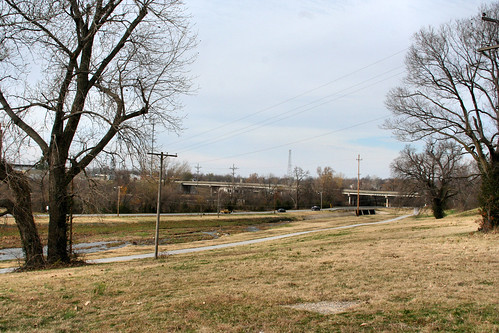Tucked away in the northwest corner of Joplin is the neighborhood known as “Roanoke.” Over the years the area has also been known as “Snob Hill” and “Mortgage Hill.”
The land originally belonged to Andrew McKee, an early resident of Jasper County, Missouri. McKee, who filed for the land in 1851, did not live to enjoy the property. He died in 1852. The land then passed into the possession of William Tingle in 1860, but due to the coming of the Civil War, Tingle had little opportunity to make use of the property. Notably, Tingle hauled pig from Jasper County to Boonville, Missouri, which was a considerable distance at a time when the only method of transportation available was a wagon, as the railroad would not arrive in the region until well after the close of the Civil War.
In 1866, Tingle sold the land to Henry Shepherd and other individuals. Later, the Granby Mining and Smelting Company leased the land and eventually purchased it. The company eventually sold forty acres to Peter A. Christman who then deeded the land to the Joplin Roanoke Realty Company. The company was established in 1907 with Christman and his three brothers as the principal stockholders.
When word spread that the area would be developed into a new residential neighborhood, the news was met with skepticism. Many believed that the area was too rough and steep. Land in the new neighborhood sold for $600 an acre which, for the time, was expensive. The purchase price did not include the cost of sidewalks, grading, paved streets, nor did it include the expense of laying new water, sewer, and electric lines.
The Christman brothers and the Joplin Roanoke Realty Company were joined by Edmund A. Bliedung, Phil Michel, J.F. Osborne, and Bob Fink. Peter Christman and Bliedung were business partners, having founded Joplin’s Christman Dry Goods Company in 1895. It was Osborne who christened the neighborhood “Roanoke” and Peter Christman who created the street names such as Glenview Place, Hampton Place, Richmond Place, Islington Place, and Jaccard Place. The tony English inspired names were joined by a few older Joplin names such as North Byers, North Moffet, North Sergeant, and North Jackson Avenues.
Mrs. Ocie D. Hunter and Leonard Lewis were the first to build “cottages.” The distinction of the first large two-story house went to the Dana residence located at 802 North Sergeant. Grocer Nicholas Marr built a large home at 615 Hampton Place. Ethelbert Barrett built the home at 1002 North Moffett Avenue. When he died in 1936, Barrett was buried in an ornate tomb in Mount Hope Cemetery. Other early residents included C. Vernon Jones (816 North Byers); Dr. Mallory (827 North Sergeant); J.F. Dexter (920 North Sergeant); Fon L. Johnson (702 Glenview); William J. Creekmore (915 North Sergeant). Creekmore was known as the “king of the Oklahoma bootleggers.”
Despite the fact the neighborhood was home to several wealthy residents, it did not escape the sorrows that less wealthy areas of Joplin experienced. In 1950 William Creekmore’s daughter Gwendolyn was found murdered at the family home in Roanoke. The coroner’s jury ruled she came to her death at “by a party or parties unknown to jury.” Her murder was never solved.
Note: We tip our hat to the late Dolph Shaner who published a brief history of Roanoke that was used to create much of this post.

